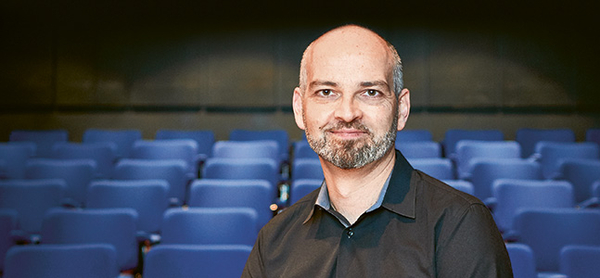What alternatives are there?
If you want greater outreach, you have to use the communication channels of choice of your target audience. That could be entertainment programmes, the tabloid press or fictional formats. Or online channels, as already mentioned. And there you may well have to use different content: you have to show scientists as people who are passionate about their work, you have to build a story around their findings, etc. In this way, you can reach out to a lot more readers and viewers.
Though you don’t usually transfer knowledge through such communication, if you do it well, you can generate more interest in science and burnish its image – with all segments of the population.
Generate more interest – build a strong image

How can science communication reach people with little or no interest in science? Professor Mike S. Schäfer on the challenges and opportunities of today’s media landscape.
Until quite recently, the most common way of reaching the public was through science journalism. So what has changed?
There have been three key developments in my view. First, there is less science journalism than there used to be because many media outlets are cutting costs. Second, higher education institutions, companies and political actors are increasing their PR activities on scientific topics. And the third factor is digitalisation: scientists, but also other actors, can directly enter into a dialogue with the public online.
According to your “science barometer” for Switzerland, about half of the population show an interest in science. How can science be made more palatable for the other half?
Not by plying them with more and more information. In academia, science communication is still mainly regarded as a vehicle for transferring knowledge – the aim is to pass on facts and explain results. Because that’s how we as scientists approach things. This is how the media has traditionally communicated science. However, research has shown that this type of reporting is only consumed by those members of the public who already have an affinity with science.
With its Agora funding scheme, the SNSF aims to foster dialogue between science and society. You recently assumed the presidency of Agora, what are your first impressions?
I think it is always positive and important for a national organisation like the SNSF to voice its commitment to science communication. A few higher education institutions use their communication activities also to pursue their own interests. The SNSF could help to foster a big picture view. But many researchers have still never heard of the possibility of obtaining a grant for public communication measures through Agora.
Agora: dialogue between science and society
It takes time to put together research results in such a way that laypeople can follow what you are saying and engage in the debate. With its Agora funding scheme, the SNSF finances projects that do just that. This could mean staging exhibitions, giving multimedia presentations or conducting experiments in a lab. Agora projects create opportunities for encounters and for listening to others, and, by doing so, encourage more dialogue between science and society.